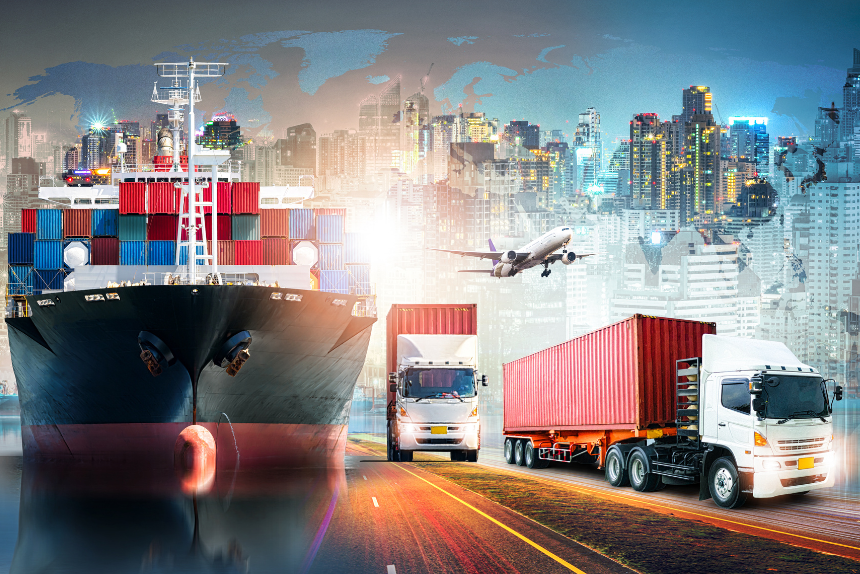When US President Donald Trump made his shocking tariff announcement on April 2, it shocked Southeast Asia more than anywhere else. This region’s whole economy and view of the world are based on exports. These US tariffs on Southeast Asia are changing the way trade works, affecting where people choose to invest, and causing political problems all around the region.
- How Much Does Southeast Asia Rely on the US Export Market?
- Why did Thailand take so long to meet US tariff requests?
- What Did the US Want in Exchange for Lowering Tariffs?
- How are Thai companies dealing with the effects of US tariffs on Southeast Asia?
- Why is the transshipment problem becoming more important?
- What Will Southeast Asia’s Export Economy Look Like in the Future?
The new US tariffs on Southeast Asia were as high as 49% for some countries. They affected a wide range of industries, from electronics exporters in Thailand and Vietnam to chip makers in Malaysia and garment manufacturing in Cambodia.
“I remember getting up in the morning. It was very early in the morning when I saw him standing on the White House grounds with his board. I thought, “Did I see that correctly?” Thirty-six percent? How could it be? Richard Han, whose father started Hana Microelectronics, one of Thailand’s biggest contract manufacturers, remembered this.
Thailand, which was originally going to pay a 36% tax, has now made a deal to lower it to 19%, like most of its neighbors. After a lot of back-and-forth, the deal was signed just two days before Trump’s August 1 deadline. This tight deadline put even more strain on already fragile ties and made many governments in the area act rapidly, often without properly consulting their own businesses.
How Much Does Southeast Asia Rely on the US Export Market?
The 10 ASEAN countries sent $477 billion worth of goods to the US in 2024. Vietnam was the most exposed, with $137 billion in exports, which is almost 30% of its GDP. Thailand came in second with more than $63 billion, which was a sixth of its total exports.
Because of this severe dependence, Vietnam was the first to talk and was able to lower its high 46% tariff to 20%. Trump also said that Vietnam committed to no duties on any US imports, but Vietnamese officials have not confirmed this. No matter what, other countries saw Vietnam’s arrangement as a standard.
There are no public details or signed agreements, and sources say that Vietnam disagrees with what Trump said. Still, the agreement established a good example for others to follow.
Countries like Indonesia and the Philippines, which don’t conduct as much business with the US, could negotiate less quickly. Still, the uncertainty about future tariffs is still a big problem for planning and international investment.
Why did Thailand take so long to meet US tariff requests?
Thailand’s economy relied heavily on trade with the US, but it had problems at home that made negotiations take longer. The coalition government of the country, which included many parties and interest groups, had trouble coming up with a unified answer. At the same time, Vietnam’s centralized government structure let it act fast and decisively.
Talks were also made more difficult by Thailand’s strained diplomatic relations with the US. The country sent 40 Uyghur asylum seekers back to China in February, which drew criticism from Washington. Later, the arrest of a US professor on a lèse-majesté allegation caused even more anger.
Sources say that US negotiators brought these problems up during trade talks, which upset Thai officials. One high-ranking official said that the meetings were “emotional” and “full of complaints that had nothing to do with the issue at hand. Read another article on Canada Targets Chinese Imports
What Did the US Want in Exchange for Lowering Tariffs?
The US wanted more than just lower import taxes. They wanted access to Southeast Asia’s protected agricultural markets. This caused a lot of problems in Thailand.
Politics are still delicate in the country when it comes to farming. Big companies like CP Group control industries including poultry, pork, and animal feed. Letting foreign companies compete will affect domestic producers, especially small farmers.
Worawut Siripun, a member of the Thai Swine Raisers Association, said, “US farmers work on a huge scale.” If we let their pork in without taxes, farms like mine won’t be able to stay in business.
Rice and dairy farmers in Japan and India also had problems since they didn’t want to give in to US pressure. A Thai trade delegation said, “Vietnam opened a Pandora’s box.” “It’s hard to put the lid back on once you let people in.”
Some governments still don’t know how to deal with the agricultural question, so they make temporary plans and imprecise promises instead of long-term ones.
How are Thai companies dealing with the effects of US tariffs on Southeast Asia?
Thai manufacturing, who add a lot more to the country’s GDP than farming, were ready for a rapid fix. Many people depend on US markets, either directly or through worldwide supply chains.
Suparp Suwanpimolkul, the deputy managing director of SK Polymer, stated, “If we get 36%, it’s going to be terrible.” The company, which started in 1991, creates rubber and synthetic parts for brands all around the world. About 20% of its sales originate from customers in the US.
Suparp said, “Our margins are really small. We might be able to handle tariffs of 20–25% by lowering expenses, but anything higher makes it hard to plan for the future.
Richard Han of Hana Microelectronics agreed with this worry. “We can handle a 20% tariff. Buyers will stay with us if everyone pays the same amount. But not knowing affects trust.
Even though these companies send their goods through many nations, a lot of them end up in the hands of Americans. Because of this intricacy, it’s challenging for enterprises in Southeast Asia to guess how US tariffs on Southeast Asia will be used.
Why is the transshipment problem becoming more important?
The US is worried that Chinese companies are using transshipment to avoid paying direct tariffs by sending goods through Southeast Asia. Trump said that Vietnam would have to pay a 40% tax on any commodities that were thought to be Chinese exports that were being sent to Vietnam.
After the US put tariffs on China, Thailand and Vietnam got more foreign investment. But a lot of the time, this growth came from Chinese companies moving to the area or working with local enterprises. A lot of goods that come from Southeast Asia still have elements built in China.
Parts for SVI, an electronics manufacturer, originate from all throughout Asia, including Malaysia, Taiwan, China, and the Philippines. In automated factories, robots put together medical gadgets and security cameras. But figuring out the real country of origin is harder because of where each part comes from.
According to WTO standards, a product is considered local if 40% of its value is contributed locally or it is changed in a big way. But it looks like the US is not following these rules.
Han remarked, “We depend on China’s huge, efficient supply chain.” “It’s not just about the price; it’s also about how easy it is to get. Not only is it expensive to replace Chinese inputs, it’s also not practicable.
If stronger restrictions about where things come from are put in place, this might imply that US taxes on Southeast Asia could go up without warning.
What Will Southeast Asia’s Export Economy Look Like in the Future?
Trump says that the Philippines and Indonesia agreed to no taxes on US goods, but officials from those countries say that there are no final agreements in place. There are still a lot of problems that need to be worked out in the negotiations.
Thailand has had to cope with delays and political problems, and now it has to figure out how to carry out its contract with the US. There aren’t many details yet, and it may take years to enforce.
In the meantime, businesses are stuck in limbo. “At some point, this has to stop,” Han said. It has to stop, right? The bigger problem is that no one knows the rules. “All we can do is wait.”
The fact that US tariffs on Southeast Asia are unpredictable continues to make one of the most export-dependent areas in the world unstable. Short-term deals may help for a little while, but long-term stability is still hard to find.








